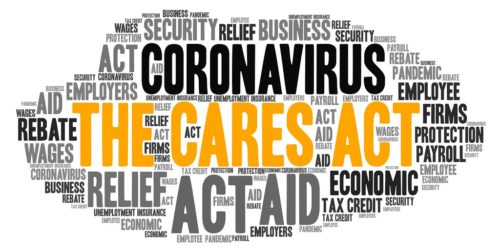Originally published on Forbes.com.
The nation is being led to believe that the Coronavirus Aid, Relief, and Economic Security Act (CARES)—the $2 trillion stimulus bill now pending in the House—is bipartisan. Looking at the tax provisions and seeing how they are scored by the Joint Committee on Taxation, however, gives one pause. One pretty obscure provision swings a very large portion of the tax savings to a tiny group of wealthy people.
The Scoring
The report indicates that over the next ten years, all the tax provisions of the bill combined produce a net revenue loss of $591.1 billion- a bit over half a trillion dollars.
Some of the provisions are a mixture of negative and positive with the negative being concentrated in 2020 and 2021, an example of that being the suspension of minimum distributions from retirement accounts. How that helps boost the economy is a mystery to me, but so it goes.
Most of the provisions are negative throughout and they all are net negative or zero. Of the twenty provisions that are scored, two stand out. Together they account for $462.0 billion of the revenue loss—that is 79.16% of the total.
Something For The Little People
The bigger number is $292.4 billion for the recovery rebate for individuals. The rebate is a $1,200 refundable credit against your 2020 income tax ($2,400 for a couple filing jointly) plus $500 per qualifying child. It is phased out at a rate of 5% for adjusted gross income over $75,000 for singles, $112,500 for head of household and $150,000 for joint filers.
How you get the credit is a little complicated. Tony Nitti explains it here. IRS will send you a check (or no check) based on your 2019 return or your 2018 return if you have not filed 2019 yet. When you file your 2020 return it will be trued up to be based on your 2020 income.
Ironically, I can use myself to illustrate how it works. My partner and I withdrew from the boutique practice we were part of near the end of 2018. So my income for 2018 was over $100,000. My 2019 income was much lower. If I file my 2019 return very soon, I will probably get a check. Otherwise I will not and will have less tax to pay with my 2020 return.
How you define middle class is a great source of controversy. If you consider people earning in the low six figures as middle class, at least the higher end of that group is cut out. According to this table, the people cut out of the rebate are more or less the top 10% in terms of household income.
So the rebate is going to the 90%. Hooray for us. We got the biggest share. It’s just that there are a lot of us to share it among.
The Other Shoe Drops
The other big revenue loser was “Modification of limitation on losses for taxpayers other than corporations” at $169.6 billion. There are two pieces to this provision. Section 461(j) which limits excess farm losses to $300,000 is suspended for tax years 2018 through 2025. I don’t think that is where most of the revenue is being lost.
The other piece is pushing back Section 461(l) so that rather than being effective for the years 2018 through 2025, it is only effective for 2021 through 2025.
Section 461(l) limits excess business losses. I covered it in this 2018 piece Why President Trump’s Rich Friends Might Have Been Mad About The Tax Act. Having to be concerned about 461(l) is a very high-class problem. You have to have very high positive income from things like salary and interest and dividends and flow-through losses from other businesses that you materially participate in.
Those flow-through losses can shelter an unlimited amount of business income, but only a limited amount of investment income or capital gains. It’s a pretty generous limit, such that few taxpayers need to worry about it. This provision gives some credibility to President Trump’s comment on the passage of TCJA that he had wealthy friends who were not so happy with him
To be affected by 461(l), a family has to have positive income well in excess of $500,000 . The ownership of such entities, even though they produce tax losses, is an indication of significant wealth.
That $169.9 billion is significantly lower than the $292.4 billion of rebates, but the $292.4 billion is being split up among well over half the population. The $169.9 billion is going to a relatively tiny number of people. $500,000 of AGI means you are in the top 1%, but 469(l) only affects a tiny subgroup within the 1%. A surgeon making $700,000 per year who does not have anything else going on does not have to worry about it.
Some Really Sharp Lobbying?
The coverage about the rush to get something passed tended to mention the excess business loss provision in passing as if it were a minor adjustment. And it certainly seems that way when you read the legislation. It is just shuffling around some effective dates. Having it turn out to be 29% of the tax cut portion of the bill given how few people are affected by it is something of a shocker.































































































